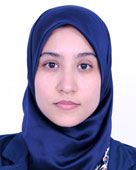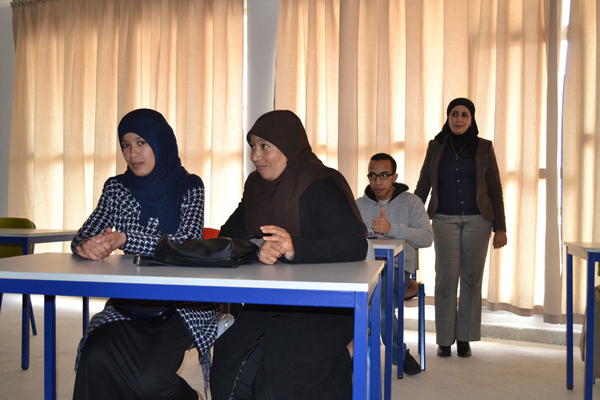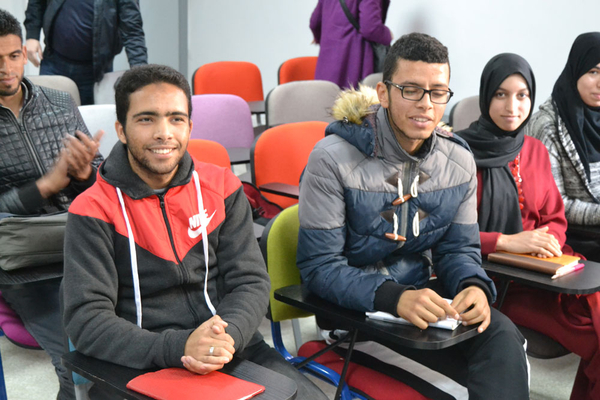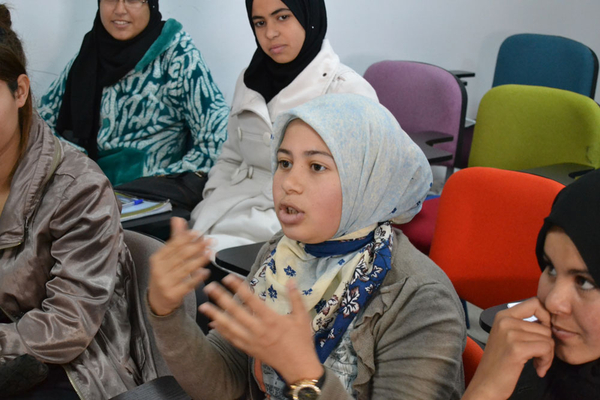Teaching 21st century skills, and how to assess them
 Malika Ouboumerrad
Malika Ouboumerrad
Faculty of Letters and Human Sciences
Mohamed V University-Rabat
Morocco
Abstract – Given the rapid technological advancements, accelerated globalisation and socioeconomic changes, many curricula worldwide tend to prioritise and overemphasise the teaching of the skills and competences that are deemed critical to success in today’s world. This paper provides a brief account of the so-called 21st century skills and reflects on the changes in the curriculum, instruction, and assessment, which have been introduced to set a ground for the integration of such skills into the Moroccan EFL classroom, and discusses the ways in which the aforementioned skills are taught and assessed.
Introduction
Preparing today’s learners for the future simply means helping them to acquire the necessary skills and competencies that will enable them to get a job, to cope with different situations, to solve problems, as well as to interact with different people from different social, cultural and economic backgrounds. An educational system that takes into account the needs of 21st century students should help them become productive and efficient users of technology, critical thinkers, independent, autonomous and lifelong learners. This re places the traditional forms of learning that value memorisation and mastery of content knowledge over student-designed demonstrations of skills, along curricula that are still information-based. In addition, the simple transmission and accumulation of knowledge in schools does not provide opportunities for practically applying knowledge to new contexts. Hence, teaching and enhancing these skills requires robust instructional models that foster a culture of quality. This also implies a need to reconsider the tools we use to teach our students, the type of education we give them, and the areas and skills we often tend to emphasise.

Learners at the Adult Education Centre in Casablanca. © Johanni Larjanko
On Defining 21st Century Skills
The term “21st century skills” is often used interchangeably with a number of other related terms such as “applied skills”, “cross-curricular skills”, “interdisciplinary skills”, “soft skills”, “life skills”, “interpersonal skills”, “workforce skills”, and “non cognitive skills” (Silva, E. 2008). Though these may have different meanings in different contexts, they contain almost the same set of competencies. The Educational Testing Ser vice (2007), for instance, defines 21st century skills as “the ability to collect and retrieve information, organise and man age information, evaluate the quality, relevance and useful ness of information and finally generate accurate information through the use of existing resources”.
Emerging 21st century content-areas include – but are not limited to – global awareness, environmental literacy, health literacy, visual literacy, information literacy, financial literacy, civic literacy, and entrepreneurship literacy. These areas in turn address a set of learning skills such as critical thinking, problem solving, communication, digital and media literacy, creativity, collaboration and leadership. Other life and career skills proposed by the P21 (2011) and the Pacific Policy Research Center, (2010) include social and cross-cultural skills, productivity and accountability, initiative and self-direction. The list is long, and could make for several articles. We will focus on the first set of skills, since they may constitute the basic expertise students need to acquire in order to function effectively in today’s world. Let us have a closer look at some of them.
Critical thinking and problem solving (CTPS)
The term “critical thinking” is often associated with so-called problem solving skills. Yet, a classical definition by John Dewey (1909) states that critical thinking is an active, consistent and careful consideration of a belief or a form of knowledge in the light of the further conclusions to which it tends. Inspired by Dewey’s account of critical thinking, the British Council (2015) defines critical thinking and problem solving skills as the ability of individuals to reason effectively, ask significant questions that clarify various points of view and lead to better understanding of issues. The P21 initiative on the other hand defines CTPS as the ability of learners to use systems thinking, make judgments and decisions, and solve problems. This requires critical reflection on various decisions and processes (Pacific Policy Research Center, 2010; P21, 2011). Through critical thinking, students are able to frame, analyse, and synthesise information as well as negotiate and discuss various viewpoints to explore different perspectives on issues and problems.
“Critical thinking is an active, consistent and careful consideration of a belief or a form of knowledge in the light of the further conclusions to which it tends."

It is easy to smile whenyou know the language. © Johanni Larjanko
Digital Literacy
The whole world is shaped and reproduced by and through technology, and the classrooms are no exceptions. Technology offers the potential to develop students’ 21st-century skills by providing them with new ways to develop their problem solv ing, critical thinking, and communication skills. Using tech nology as a tool to reinforce, extend and deepen learning enables students to discover, master, and communicate knowledge and information, allowing some room for learn er-autonomy and responsibility (The British Council, 2011). Technology can help students practice transferring these skills to different contexts, reflect on their thinking and that of their peers, practice addressing their misunderstandings, and collaborate with peers (P21). The use of ICT in our class rooms enhances motivation and active engagement, and allows learners to move from the stage of knowledge accu mulation and application, to knowledge creation.
Media literacy
It is not sufficient to teach our learners how to use various types of gadgets, or how to locate and share information on different sites. One of the critical skills for today’s world is media literacy. Students use different types of media and this requires critical awareness of how these media work, how the information is created and for what purposes. It is essential for individuals to be able to access, understand, and an alyse media messages (The Pacific Policy Research Center, 2010). This skill set includes the ability to understand media bias and the influences they might have on beliefs and be haviours. You are media literate when you can understand ethical issues surrounding the production and the use of various media forms.
Communication
With the great emphasis on communication today, it has become essential to stress communicative activities in the classroom (Ouboumerrad, 2012). The adoption of commu nicative approaches has put communication and interaction at the centre of teaching and learning; the main goal of teaching today is to develop students’ communicative com petence (Richards, 1980, Hymes 1975; Widdowson, 1978; Canale1980, 1985; and Swain, 1980). Students should be able to communicate clearly, using oral, written, and nonverbal forms in different contexts for a variety of purposes.
Traditionally, education has focused on the fundamentals of good communication – speech, writing, listening, and reading – the demands of social relations and global economy call for a much more diverse set of communication skills. Trilling and Fadel (2009) argue that today’s student should be able to communicate and articulate thoughts and ideas clearly and effectively using verbal and/or nonverbal communicative skills in a variety of forms and contexts.
Collaboration
Collaboration, from a pedagogical stance, can be synonymous with teamwork, cooperation and partnership. Learners are required to be flexible and helpful in working with their peers towards achieving a common objective, and show willingness to make necessary compromises (The Pacific Policy Research Center, 2010). Collaboration can also mean assuming responsibility for collaborative work, and valuing individual contributions made by members of the team (Trilling and Fadel, 2009).

“This is about our lives, our futures. We want to have a say in it!”. Open discussion at the Adult Education Centre in Casablanca. © Johanni Larjanko
Social and cross-cultural skills
Learning cannot be isolated from the social and cultural context in which it takes place, nor from other cultural contexts that it targets. Part of the 21st century skills is the learning of appropriate social behaviour. Social and cross-cultural skills refer to the learners’ ability to function within a group – be it their community or a different culture. This involves showing tolerance and respect for others, besides embracing social and cultural differences while preserving one’s own. Moreover, using different perspectives to find solutions to problems is increasingly important in social spheres as well as in the workplace. Partnership students should be able to interact effectively with others and conduct themselves in a respectful and professional manner, work effectively in diverse teams, and respond open-mindedly to different ideas and values.
Promoting 21st Century Skills: The Case of the Moroccan EFL (English as a Foreign Language) Curriculum
We have looked at some of the core skills needed in the 21st century. Now let us have a look at how they can be taught. The possibilities are almost endless. We can emphasise 21st century subjects, use 21st century tools like ICT to develop these learning skills, we can teach and learn in a 21st century context and we can use 21st century assessment measures (P 21st, 2011:5). Collaboration, problem solving and communication can be learned through a variety of methods. Exam ples include project-based learning, problem-based learning, and design-based learning.
In the Moroccan EFL context, the objectives of ELT go hand in hand with the new conception of communicative competence. Students should learn and be able to use the language to communicate in real contexts for a variety of purposes (The Official Guidelines for TEFL, 2007). Together with the major aim of developing students’ communicative competence, there is a place for the integration of the other 21st century skills. The official guidelines identified the key skills and competences that students need to develop:
- The ability to think through critical, creative, and analytical thinking, systems thinking1 and problem-solving;
- The ability to make informed decisions;
- Transferring the English language learning to other learning contexts and situations;
- Developing communication skills;
- Working effectively in groups;
- Make connections with the community;
- Being aware of their responsibilities and rights as citizens and acting accordingly;
- Contributing to the aesthetic and cultural life of their community in any way they can.
- (The Official Guidelines for TEFL in Morocco, 2007:6–7)
Project-Based Learning
Project-based learning, or project-work is an essential part of the Moroccan EFL textbooks. It is integrated from beginner to advanced levels, with themes and topics that suit students’ proficiency and mastery of the language. A project is any activity in which learners as individuals or groups gather and process data from a variety of sources in order to achieve a pre-stated objective and finally present it to the whole class (The Official Guidelines, 2007). Most projects have an end-product – i.e. an oral or written report, a poster, a file, a handbook, an audio or a video cassette or any other pres entation format. Project-based learning has a lot of benefits for students who prefer working collaboratively on learning activities. Research has shown that students who have difficul ties with traditional classroom, textbook, and lecture learning benefit a lot from a project-based learning experience, which more closely aligns with their learning style and preference (Darling-Hammond et. al., 2008). It is important that such projects are based on authentic, real-world problems and questions that students care about.
“Measuring skills like collaboration, teamwork, or critical thinking for instance cannot be achieved through multiple choice or gap filling tasks.”
Learner training
A common feature of Moroccan EFL textbooks is the incorporation of learner training sections in different units of the textbooks. Learning how to learn, or learner training, refers to “teachers’ intervention to help learners make regular use of various language learning strategies in order to learn effec tively, operate competently in real-life situations, and solve real-life tasks” (The Official Guidelines, 2007). Downes (2005) and Anderson (2007) claim that learner training involves self-instructional processes and strategies which can be used in autonomous learning or in conventional training on “how to learn.” Such training enhances learners’ awareness of the language and the process of language learning. It is also aimed at involving learners in the planning of their own learning via supplying them with strategies of time management, organisation and self-assessment. This type of training is one way of providing learners with necessary learning tools that would help them continue learning on their own outside of school.
Assessment and the 21st Century Skills
The 21st century skills may be more difficult to assess than factual knowledge. Measuring skills like collaboration, teamwork, or critical thinking, for instance, cannot be achieved through multiple choice or gap-filling tasks. Newer tests with new standards designed to assess critical thinking or problem-solving are needed in order to measure such skills. While performance assessments can always be an alternative to high-stakes tests, it is considered a subjective and time-consuming option.
In the Moroccan EFL context, for instance, performancebased assessment is often used to assess the four skills (reading, writing, listening, and speaking). This kind of assessment can easily measure learners’ use of structures, appropriate vocabulary items and functions in a performance task. However, although it can provide information on what learners know and what they are able to do with that knowledge, it is still not clear if this type of assessment is enough to measure things like their critical thinking and problem solving skills. Fortunately there are alternative forms of assessment available, such as journal, portfolio, projects, self-assessment, and peer-assessment. Teachers can use four alternative assessment forms for this:
- Journal Assessment: This is a learner’s own ongoing record of expressions, experiences and reflections on a given topic.
- Portfolio Assessment: This is a “purposeful” collection of work that helps to define the learner’s efforts and achievements in a specified area throughout the course.
- Project Assessment: This assessment measures the learner’s ability in “real life” tasks and situations.
- Self-Assessment: A fundamental component of autonomous learning is the ability to assess one’s own progress and areas that need improvement. Learner selfassessment ought to be incorporated into every evaluation process. Learners would be allowed to examine and evaluate their own English language learning. (The Official Guidelines, 2007: 74).
Generally speaking, the skills that have been reviewed in this article are widely regarded as a prerequisite for schools and teachers of today. Thus, there is a need to promote such skills in our educational system in order to adapt education to the present and prepare our students for the future, and hopefully meet workplace demands and technological advancements at the same time.
Note
1 / Systems thinking is a way of understanding reality that emphasises the relationships among the system’s parts, rather than the parts themselves.
References
Anderson, P. (2007): What is Web 2.0? Ideas, technologies and impli cations for education. JISC Technology and Standards Watch. Available at: www.jisc.org.uk/media/documents/techwatch/tsw0701b.pdf
Association of College and Research Libraries (2000): Information Literacy Competency Standards for Higher Education. www.ala.org/acrl/standards/informationliteracycompetency
Gass and C. Madden (Eds.), Input in Second Language Acquisition (pp. 235–253). Rowley, MA: Newbury House.
Learning and Teaching Support Network (2002): Development of Key Skills in Higher Education: resource guide, ltsn.
Metiri Group (2006): Technology in Schools: What the Research Says. Commissioned by Cisco Systems. Retrieved April 1, 2010 from: www.cisco.com/web/strategy/docs/education
Partnership for 21st Century Skills, available at: www.21stcenturyskills.org
Silva, E. (2009): Measuring Skills for 21st-Century Learning. Phi Delta Kappan, 90 (9)
Swain, M. (1985): “Communicative Competence: some roles of comprehensible input and comprehensible output it its development”. In S.M.
The Official Guidelines for TEFL in Morocco, (2007): The ministry of National Education. Morocco.
The Higher Education Academy (2009): Personal Development and employability (revised edition), January 2009. HEA.
Widdowson (1978): Teaching Language as Communication. London: Oxford University Press.


